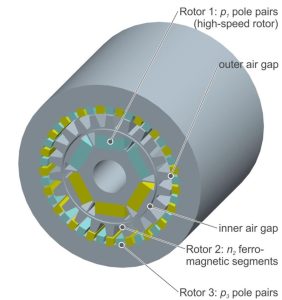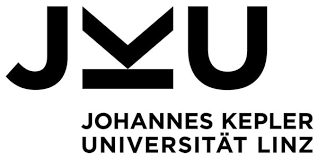Magnetic Gear with High Gear Ratio of 1:21
Magnetic gears – contactless torque transmission. Magnetic gears are able to transmit torque between an input and an output shaft without mechanical contact. Due to their contactless torque transmission, magnetic gears are efficient and allow high rotational speeds. Furthermore, they are highly reliable and provide inherent overload protection. Fundamentals: The coupling between the inner and the outer rotor of a coaxial magnetic gear can be analyzed by investigating the magnetic field of the inner rotor. This field has a fundamental space harmonic of order p1 in the inner air gap. The n2 ferromagnetic segments modulate the magnetic field, and large-magnitude space harmonics in the outer air gap have the orders n2 − p1 and n2 + p1. A mean torque can be transmitted if the outer rotor produces the same space harmonic in the outer air gap, i.e., p3 = n2 − p1 or p3 = n2 + p1. The high-speed rotor of a magnetic gear can be identified by its smaller number of pole pairs (inner rotor in Figure). Commonly, this rotor is driven by an electrical drive. Either the rotor with the higher number of pole pairs (outer rotor in Figure) acts as the gearbox output and the middle rotor is kept stationary, or the middle rotor is used as the gearbox output and the outer rotor is kept stationary. A magnetic gear achieves the highest torque transmission for p3 = n2 − p1.


ebmpapst St. Georgen GmbH & Co KG, Johannes Kepler University Linz and LCM have jointly developed a prototype magnetic gear. It was optimized regarding radial forces, cogging torque and maximum torque transmission with minimal magnet volume. It can be operated at high speeds with low losses.


